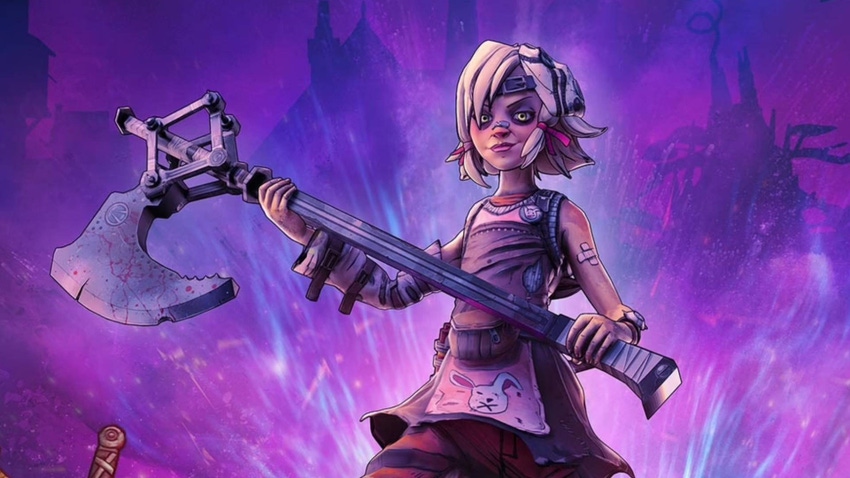How the team at Gearbox built upon the old to create the new in their latest Borderlands title.

Building a game is expensive and time consuming, and few techniques have simplified the process quite so well as the concept of modularity. Emphasizing that point at this year's GDC was Brian Fieser, associate director of sound design at Gearbox Software. With this Lego-set approach to development, he explains, the team behind the latest Borderlands game, Tiny Tina's Wonderland, were able to create a complex ecosystem of sonic variety surrounding its many weapons and systems.
As Borderlands has grown from a surprise cult hit into a beloved staple series, its resources have naturally expanded with its growth in popularity. As Fieser explains, this has allowed Gearbox to expand the audio team from its original four members, on the original Borderlands, to 21 on Borderlands 3. This has facilitated an enormous leap in complexity, one that builds on the modular weapons system of the games to create multiple ecosystems of sound.
The first two Borderlands games were limited in scope so only one set of sounds per manufacturer and gun type could be produced. With Borderlands 3, the increased resources for the game enabled them to focus on adding sounds to each individual gun part in the modular gun design system (known as Gestalt), increasing the range of sounds from only 250 in Borderlands 2, to 5,500 in Borderlands 3. This method increased sonic variety, which in turn expanded the novelty and value of the dropped loot.
The Wonderlands Aesthetic
As Fieser explains, Borderlands has always been, aesthetically, a mixture of both synthetic and organic elements, a western sci-fi game with touches of fantasy. For Tiny Tina's Wonderland, Gearbox designers knew they would require a visual overhaul into more of a whimsical, high-fantasy mix of those organic and synthetic themes to suit the Dungeons & Dragons inspired setting. New systems were being built for the game, while others were completely overhauled. And to reinvent the Borderlands conceit, they focused on a few key changes, particularly a new focus on melee (a historically overlooked weapon class in the series), the addition of crossbows, and swapping out grenades for magic spells, a "remix" of the three weapons systems in the original.
Production of Tiny Tina's Wonderland overlapped with production of DLC for Borderlands 3, so the audio team requested and created an organic internal library of raw processed and designed content so as to hit the ground running. These raw recordings of organic material when then get processed and given more "magic" layers to give the effects a robust complexity.
Continuing Modularity from Borderlands 3
Adding new weapons meant added modularity to other systems other than just guns, particularly spellcasting and melee. Crossbows, for example, are a gun attachment, while guns themselves have new parts that make them magic. In that sense, the design tools of Borderlands already well supported these additional demands of variety and complexity. To that end, making sound effects for new items almost mirrored that mix of new and old; for example, the crossbows, in order to sound both familiarly and yet period-appropriate, retain some of the original audio layers for their weapon parts, but also benefit from new ones (termed "medieval ballistic") that alter and bend the sound into something that is still unique and fresh.
The melee sound effects system works similar to other modular weapons in the game but they had to consider how to attach sounds to individual parts and what those would be. What they wound up with was four different types of melee weapons, each with three subtypes, with an increasing sound complexity within those subtypes, creating a "sonic identity".
Spells were also designed for modularity, with their core component broken down into a few main high level categories. Not only do these categories include elemental types, but also specifics like spell casting duration. These variations help create an impression of volume, in turn increasing the perceived value of the loot system.
"These modular systems, in our opinion, add a great deal of value to the fundamental core gameplay loop. Basically by increasing sonic variety, while also being very practical, because we're simply piggybacking on the the variable nature of the gameplay design in our games," Fieser concluded.
In other words, when designing for variety, a modular approach can benefit the developer as much as the player.
Read more about:
FeaturesAbout the Author(s)
You May Also Like

